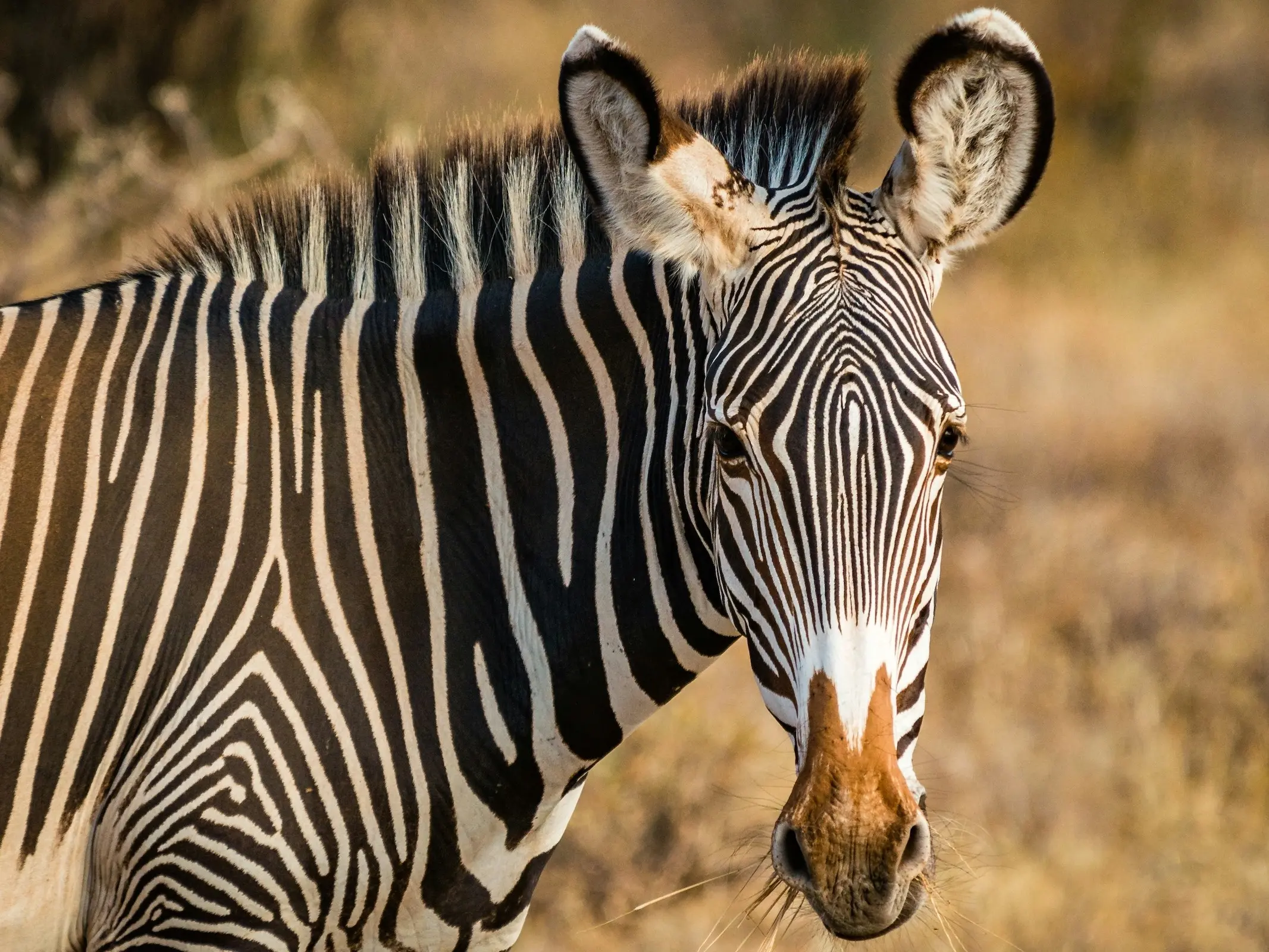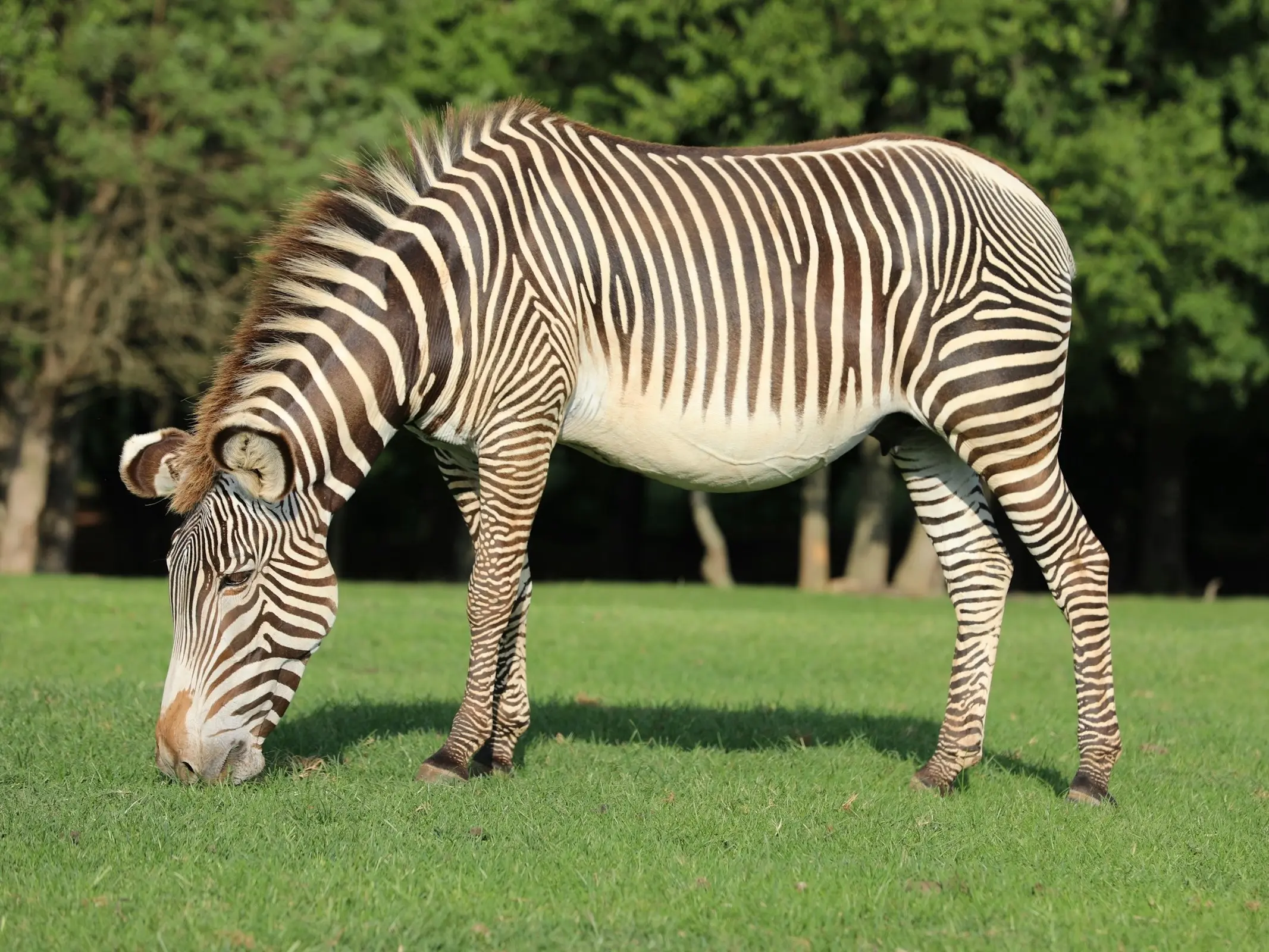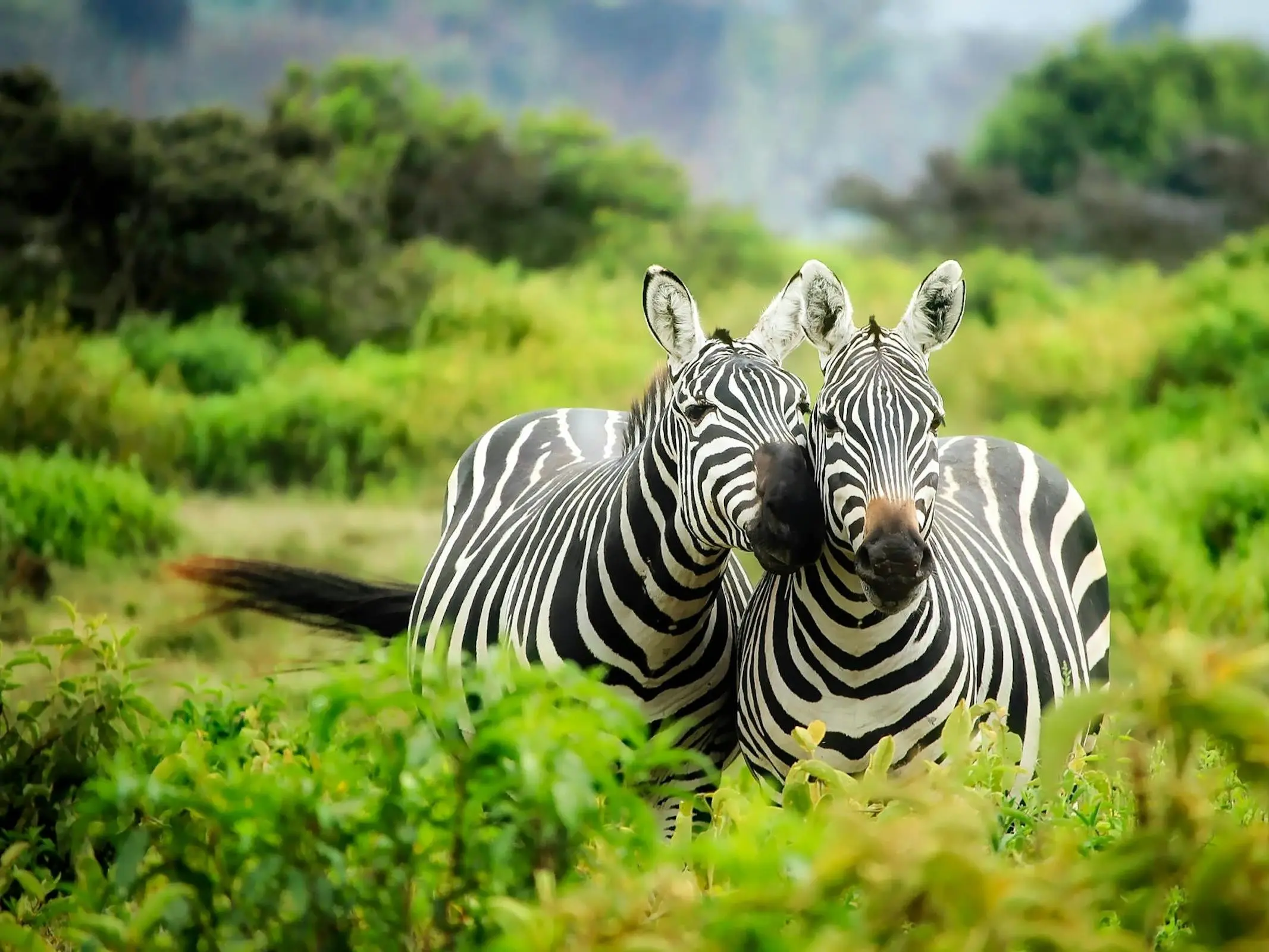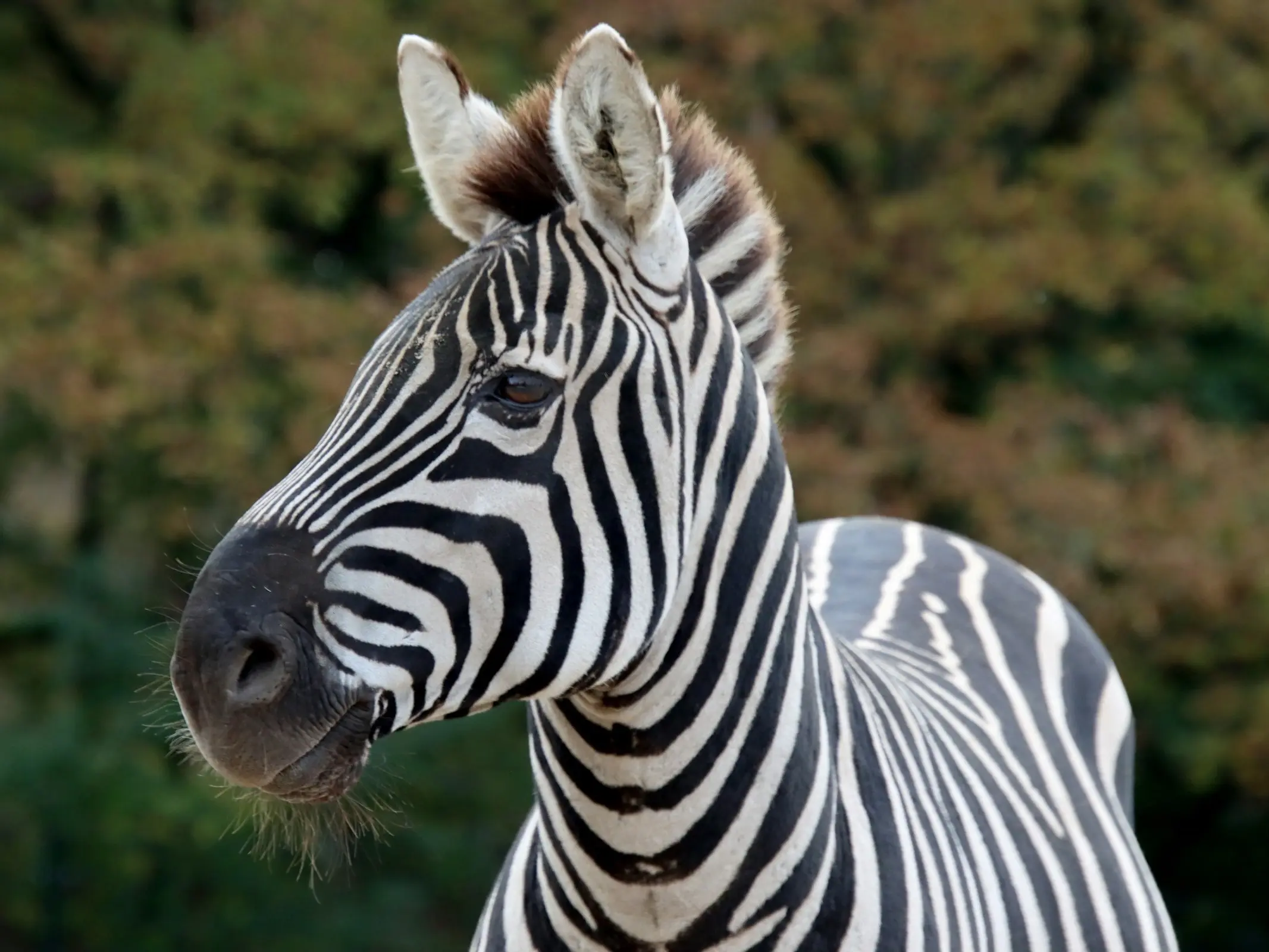
There is something about zebras, with all of that lovely contrast. Their coat is almost mesmerizing, which is probably what their particular type of camouflage is all about.
Three Distinct Types
While they all sort of look alike at a distance, when you get closer they are as different as an Arabian is from a Percheron. Once you know what to look for, identifying the three species is not difficult to do (especially the Grévy’s Zebra). Here you can see all three types together.

Grévy’s Zebra

Mountain Zebra

Plains Zebra
Grévy’s Zebra
The largest of the three, Grévy’s Zebra has an almost mule-like appearance, with big floppy oval ears and a thin nose. Their stripes are thin and closely spaced, stopping at the sides leaving the belly white. The tail is also white, with sparse fur and connected to the mane by a dorsal stripe of hair. This species is perhaps the most distinct, with it’s brown and white muzzle (and cute ears) making it quite easy to distinguish from the other two. It is the only species with a light muzzle.








Mountain Zebra
The middle sized species, the mountain zebra is quite a robust species. Their stripes are fairly broad, stopping at the sides leaving the belly white except for one stripe from neck to tail. Tail is striped with black hairs and they can have a visible dewlap under their neck. Their nose is black, but distinguished from the plains zebra because it has a brown patch across the top.








Plains Zebra
The smallest of the three, the plains zebra looks like a donkey with stripes. They are lighter and less robust in the body. Their stripes are larger and meet at the center of their belly, they can also have lighter shadow stripes in between the black. Their tails have longer hairs and their noses are black, they are easily identified as the only species to not have any brown on their muzzle.








Similar but Different
Much like horses, zebras are more similar than they are different and their camouflage is obviously different due to environmental factors. Frankly, they are all beautiful as a set and at the same time each one has it’s own specific type of lovely.